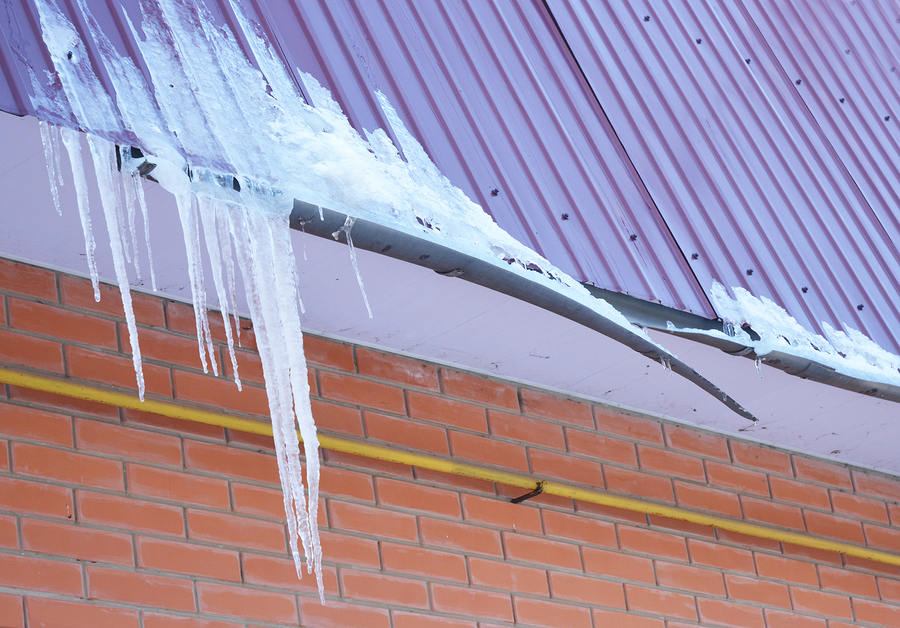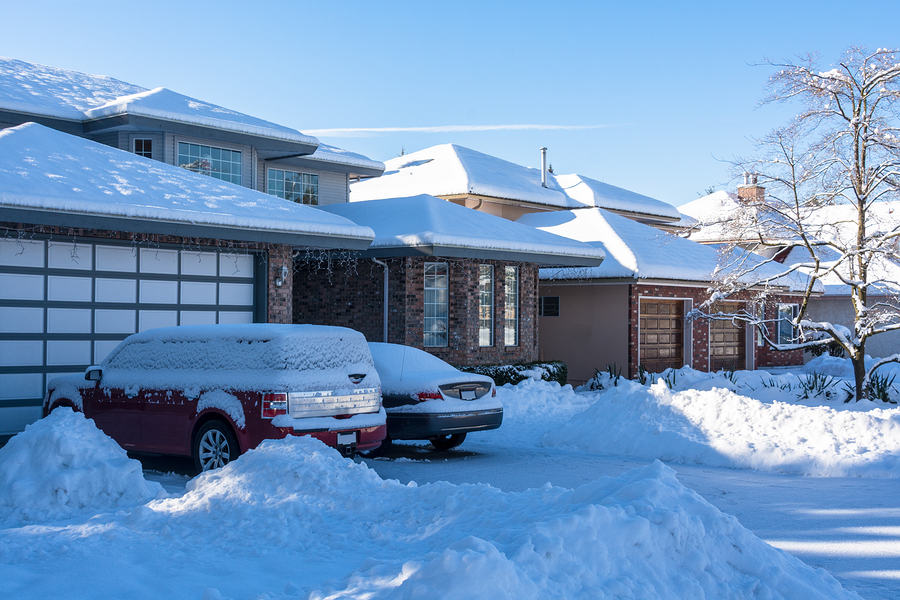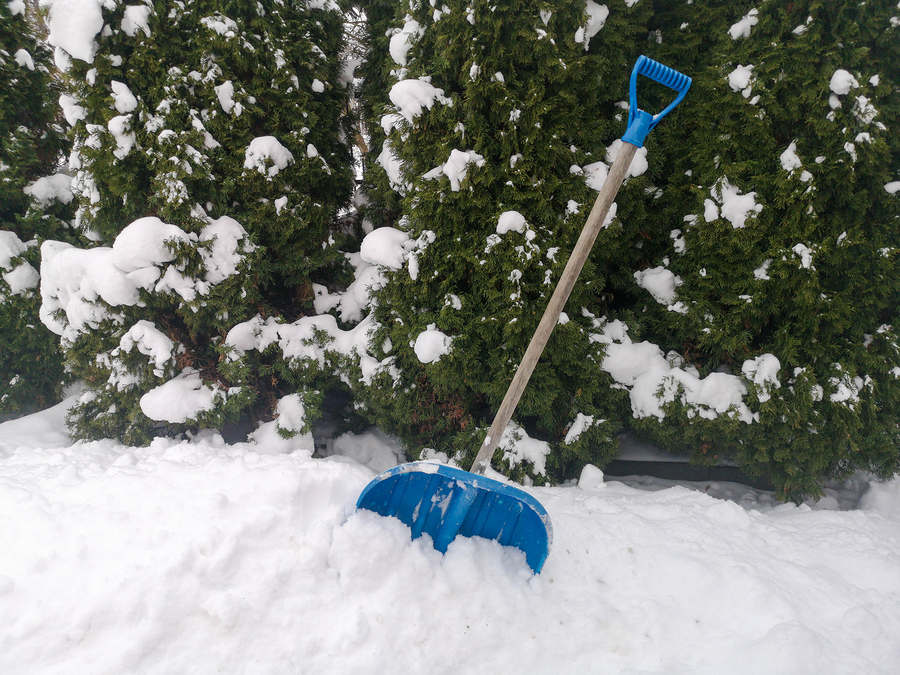When the winter months hit and the snow begins to fall, one of homeowners’ first concerns is often the accumulating snow on their rooftop. While it’s completely manageable with the right information and resources, snow and ice that piles up on what is literally “the roof over your head” is understandably worrisome for a few reasons:
- Ice dam formation
- Icicle formation
- Attic condensation problems caused by contrasting temperatures and potentially leading to mold and wood rot
- Heavy snow loads that could cause cracking, leaking, sagging or even ceiling collapse
- Worsening of existing problems such as loosening unsecured roof flashing, dislodging weak shingles, and prying open gutter seams where caulking is already damaged
Given that a sound roof is essential and that roof repairs, especially in the winter, can be costly and potentially dangerous, it’s important to understand how to effectively and safely melt snow from your rooftop.
When people think about the best way to melt snow, often the first thing that comes to mind is the old stand-by, spreading rock salt. Rock salt is relatively inexpensive, easy to find, and historically has been the most commonly used method for melting snow. But, can it cause damage to roofs?
How Rock Salt Works
Rock salt lowers the freezing point of water. When it’s combined with snow, it mixes with melting snow and ice to form a brine solution. When this brine solution comes into contact with more snow and ice, it causes more melting.
Because of the nature of this process, more rock salt needs to be added over time. Rock salt is also only effective at temperatures down to about 20 degrees Fahrenheit.
What Rock Salt is Doing to Your Roof
Rock salt is not the most effective or efficient method for managing snow on your rooftop. This is because of its temperature limitations, the impracticality of reapplying it during adverse conditions, and the large volume needed to address issues like ice dams. Aside from being ineffective, it also is damaging.
Rock salt is corrosive in nature. As a result, it can cause damage to vulnerable parts of your roof, including nail heads and aluminum flashing. Rusting nail heads can cause aesthetically unpleasant staining, but more importantly, they can result in loose roofing materials that can easily tear off during stormy weather.
In short, rock salt can compromise the integrity of a sound roof by corroding the materials that help keep it together.
Aside from its direct damage to a roof, using rock salt on your rooftop can have other harmful consequences. Runoff can cause:
- Corrosion and rusting of other parts of the home, such as siding and gutters
- Damage to plants and landscape
- Damage to driveways and walkways
- Danger to pets
Rock salt also presents health risks for people, and causes significant damage to waterways, wildlife, plants and soil due to the high volume of its use and consequent runoff.
How to Protect Your Roof During the Winter
Here are some alternative, and more favorable, options for keeping your roof safe from both accumulating snow and rock salt during the winter months:
Remove snow manually
This method requires that you use a roof rake or plastic—rather than metal—shovel to reduce the potential for damage to roofing materials. Some other considerations to keep in mind are to
- Be aware of your roof’s landscape in order to avoid skylights, vents and gutters
- Maintain safety by staying firmly planted on the ground rather than using a ladder or getting up on the roof
- Avoid clogging rain gutters and downspouts with snow
- Avoid letting gathered snow accumulate in heavy piles, even for a short while, on potentially weak areas of the roof
- Leave approximately 2 inches of snow on the roof in order to avoid damaging it
Use alternative de-icers
There are alternative de-icers to rock salt. These need to be applied to the roof and then reapplied when they become diluted or blow away, but in general they are considered less damaging to housing materials and landscape than is rock salt.
These alternatives include:
- Urea
- Calcium, magnesium and potassium chlorides
- Liquid potassium-acetate
- Calcium-magnesium acetate
Heated Snow Melting Mats
This snow melting alternative offers a durable option that is designed to be left outdoors all winter. These mats are easy to install and operate and can be controlled from indoors with the click of a button or with a wireless remote control outlet and switch. Options such as a snow sensing controller that turns the mats on when moisture is detected and temperatures drop below 38 degrees Fahrenheit also make it possible to manage snow removal from your roof automatically.
Heated snow melting mats have an energy-efficient design and cost about $1 per day to operate. The technology, design, and material quality behind them also ensure that the highest electrical safety standards are upheld.
The availability and low cost of rock salt hardly seem worth it when you consider the damage it can cause to your roof, home and property, not to mention the high price of roof repairs come springtime. Safety, efficiency and practicality are all important factors to keep in mind when considering an alternative to protecting the integrity of this crucial aspect of your home during the winter months.


